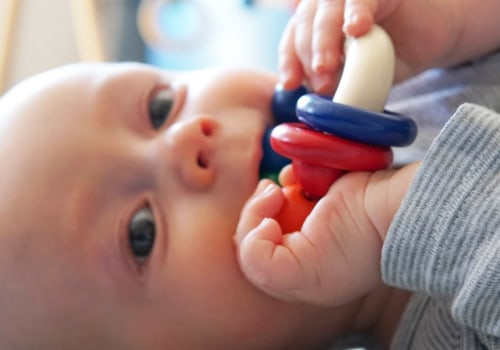As an expert in child safety and toy manufacturing, I have seen the growing concern over lead in wooden toys. Lead is a toxic metal that can be found in paint on wooden or plastic toys. While it was banned in household paint and other products in the United States in 1978, it is still widely used in other countries and can still be found in toys from overseas. This is a major concern for parents, as lead can have serious health consequences when ingested by children.
In the United States, there is no complete ban on lead in toys, but it is illegal for paint to contain a concentration of lead greater than 0.06 percent. This regulation was put in place for good reason - lead can cause nerve damage, learning and behavioral problems, reproductive damage, and irreversible brain damage. It can also increase the risk of cancer. While many dangerous toys have been recalled, there are still some that contain lead and are not on any recall list.
The majority of toys sold in the United States are manufactured in China, where there have been numerous cases of high levels of phthalates and lead found in toys. This is a major concern for parents who want to ensure their children's safety when playing with toys. When I spoke with Eleilia Preston, a mother who recently gave birth to her first child, she expressed her shock and concern over the presence of lead in toys. Like many parents, she never thought to worry about lead in toys until she became a mother.
However, it is important to note that phthalates harm a person due to total exposure from many sources, making it difficult to measure the damage that certain PVC toys can cause. If you notice that a clear plastic bottle or cup has worn out, or that the transparent plastic in a toy has become cloudy, that may indicate that bisphenol A gases are being released. It is also important to note that the level of lead found in toys may be "diluted" because the paint was applied to a wooden substrate, making it difficult for testing instruments to accurately measure the level of lead present. As mentioned earlier, the majority of toys sold in the United States are manufactured in China.
In fact, China produces over 80% of the world's toys. This is a concerning statistic for parents who want to ensure their children's safety when playing with toys. If you have purchased nostalgic retro toys from a thrift store or garage sale, or have let your child play with toys from your own childhood, it is important to store them until your child is old enough to play without putting objects in their mouth. As an expert in toy manufacturing, I can assure you that there is a body of knowledge in which first-time parents are aware of the potential dangers of antique or vintage painted wooden toys.
These types of toys may contain lead and other harmful chemicals, making them unsafe for children to play with. When a manufacturer recalls a toy from the market, they are required to contact customers who bought it online and prevent shoppers from purchasing the toy if it is still on store shelves. However, this does not always happen and there have been cases where recalled toys are still being sold online or in stores. This is why it is important for parents to stay informed and do their own research when it comes to the safety of their children's toys.
Natural Baby Mama, a popular parenting blog, has created an incredible overview of toy manufacturers that she trusts and recommends. She also provides helpful information and advice on how to select chemical-free toys that meet high safety standards. It is important for parents to pay attention to the age classification on toy packaging, as it refers to the safe age for children to play with the toy and not their intellectual readiness. This is especially important for toys that may contain small parts that can easily be swallowed.
While there are regulations in place in the United States regarding lead in toys, it is important to note that toys made in China or other developing countries carry a greater risk of containing illegal chemicals than toys made in the United States, Canada, or the European Union. This is because hazardous chemicals are less regulated in these countries. According to the Consumer Product Safety Commission (CPSC), there have been 31.7 million voluntary recalls in the past 14 months, with nearly 4 million of those recalls being due to excess lead in toys. While it is difficult to quantify the exact dangers of exposure to lead in toys, experts believe that even a month of playing with a leaded toy can increase lead levels in a child's blood.
However, this does not mean that all painted toys are dangerous. Modern painted toys that are used as intended are not a cause for concern for older children. As an expert in toy manufacturing, I can assure you that companies take great care in ensuring their products are safe for children to play with.



